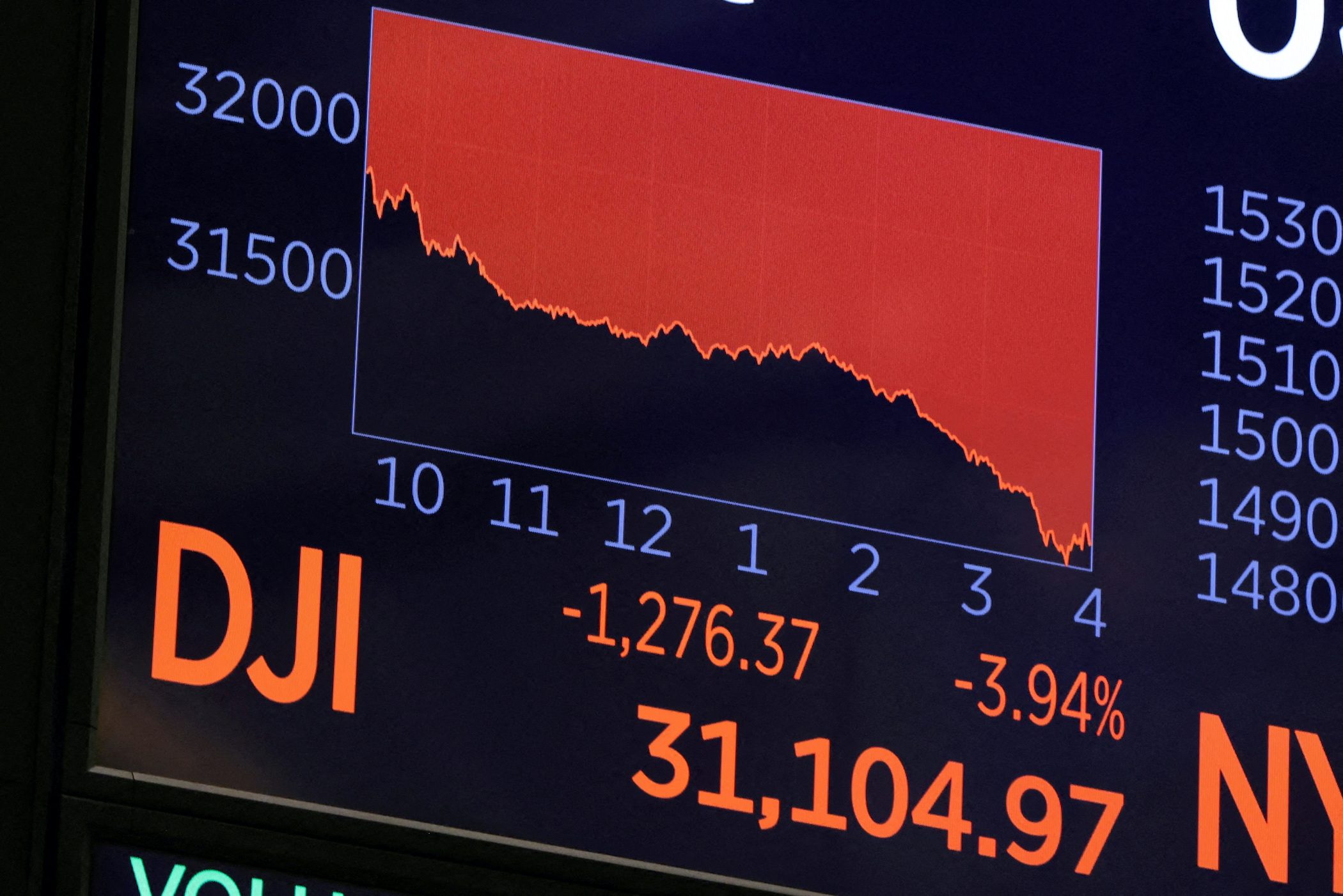SUMMARY
This is AI generated summarization, which may have errors. For context, always refer to the full article.

The Dow Jones Industrial Average, the oldest of Wall Street’s three main stock indexes, dropped 1.1% on Monday, September 26, extending the decline from its January peak to more than 20%, meeting a common definition for a bear market.
Worries that the Federal Reserve’s war against decades-high inflation is pushing the US economy into a downturn have sent the US stock market tumbling in 2022.
With the S&P 500 and Nasdaq already down some 23% and 32%, respectively, from their record highs, confirmation the Dow is also in a bear market is just the latest milestone in 2022’s market turmoil.
While the Dow, with only 30 large-cap companies, is a much narrower index than the other two, it is historically the one Main Street watches most closely.
On Wall Street, the terms “bull” and “bear” markets are often used to characterize broad upward or downward trends in asset prices. Many investors use the terms loosely, and analysts don’t always share the same specific definitions, particularly about when to call the end of a bear market.
Indeed, for professionals these are just labels that are less important than fundamentals like company earnings and valuations, interest rates, and economic conditions.
Some investors define a bear market specifically as a decline of at least 20% in a stock or index from its previous peak, with the peak defining the beginning of the bear market, which is only recognized in hindsight following the 20% decline.
Similarly, some define a bull market as a 20% rise from a previous low. However, S&P Dow Jones Indices, which administers the S&P 500 and Dow Jones Industrial Average, has an even more nuanced definition.
A drop of 20% or more from a high, followed by a 20% gain from that lower level, would leave an index still below its previous peak, a situation S&P Dow Jones Indices senior index analyst Howard Silverblatt describes as a “bull rally in a bear market.”
Indeed, investors can only be sure they are in a new bull market once a new record high has been reached, and at that point, the previous low would mark the end of the bear market and beginning of the new bull market, according to S&P Dow Jones Indices. – Rappler.com
Add a comment
How does this make you feel?
There are no comments yet. Add your comment to start the conversation.